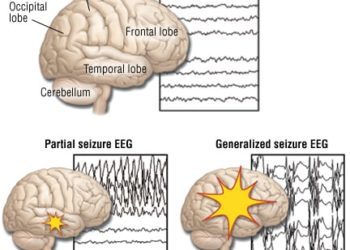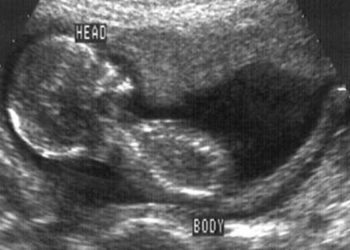Myeloperoxidase upregulation in epileptogenesis seen on molecular imaging
1. There is an increase in hippocampal myeloperoxidase (MPO) activity in a murine model of epileptogenesis, which can be imaged specifically and non-invasively with Indium-111.
2. Inhibition of MPO decreased the severity of spontaneous seizures and reduced seizure recurrence within a murine model of epilepsy, suggesting a therapeutic target for patients with otherwise refractory epilepsy.
Evidence Rating: 2 (Good)
Study Rundown: Up to one-third of patients with epilepsy suffer from a treatment-refractory form. The etiology of epilepsy has been shown to be multifactorial, including an increasingly recognized inflammatory component in addition to genetic factors directly causing neuronal excitatory disinhibition. MPO is a key mediator in the inflammatory pathway in leukocytes, which can activate matrix metalloproteinases (MMPs) believed to be involved in blood-brain barrier breakdown, implicated in seizure progression. This study showed that MPO levels are increased in the hippocampus in a murine model of temporal epilepsy as compared to sham-induced animals, and that inhibiting MPO significantly reduced the seizure severity as well. Additionally, Indium-111 was used to image MPO activity within the brain non-invasively, showing increased uptake within the hippocampus in seizure states and decreased uptake after inhibition of MPO in murine model of epilepsy, which also suppressed epileptogenesis. A pathologic examination of human temporal lobe tissue from a patient with refractory epilepsy revealed an increase in MPO as compared to analogous tissue in a patient without epilepsy. This study advances our knowledge of the biologic mechanism of epilepsy, and suggests a potential future therapeutic target of inhibiting inflammatory pathways involved in epileptogenesis. This study was limited in that it only demonstrated the MPO activity in a specific pilocarpine based murine model of epileptogenesis. Future studies should try to expand this model to a more heterogeneous model of epileptogenesis to increase its generalizability, and then onto a human model.
Click to read the study in Radiology
Relevant reading: Myeloperoxidase: molecular mechanisms of action and their relevance to human health and disease
In-Depth [randomized control trial]: This study used a murine model of epilepsy to investigate cerebral MPO activity, and used 4-aminobenzoic acid hydrazide (ABAH) to selectively and irreversibly inhibit MPO. Indium-111 then could be used to image MPO activity with and without the presence of ABAH, and the presence of increased MPO activity was confirmed with actual tissue samples from human patients both with and without refractory epilepsy. Blocking MPO in this murine model delayed the rate of spontaneous recurrent seizures (99.6 vs. 124 hrs, p = 0.016), decreased the severity of seizures (p < 0.05), and inhibited mossy fiber sprouting (Timm index: 0.31 vs. 0.03; p = 0.003). Additionally, matrix metalloproteinase activity decreased after MPO inhibition (1.44 vs. 0.04 U/mg, p = 0.049) and was upregulated during epileptogenesis showing activity dependence upon MPO activity, suggesting that MPO acts upstream of MMPs.
Image: PD
©2015 2 Minute Medicine, Inc. All rights reserved. No works may be reproduced without expressed written consent from 2 Minute Medicine, Inc. Inquire about licensing here. No article should be construed as medical advice and is not intended as such by the authors or by 2 Minute Medicine, Inc.





![Adverse pregnancy outcomes associated with thrombophilias [Classics Series]](https://www.2minutemedicine.com/wp-content/uploads/2015/07/Classics-2-Minute-Medicine-e1436017941513-75x75.png)

